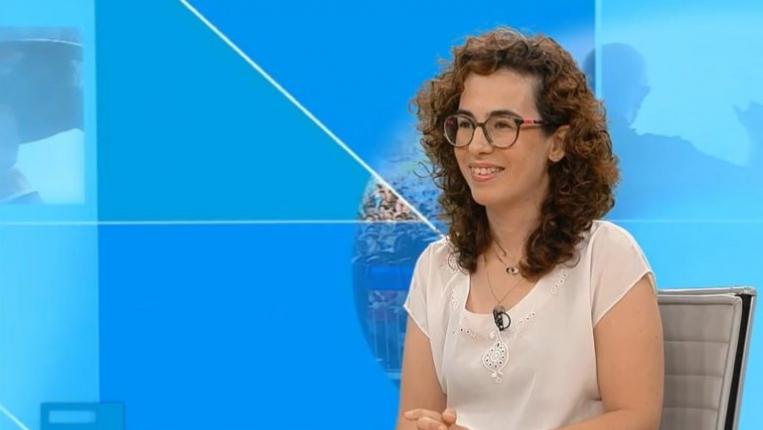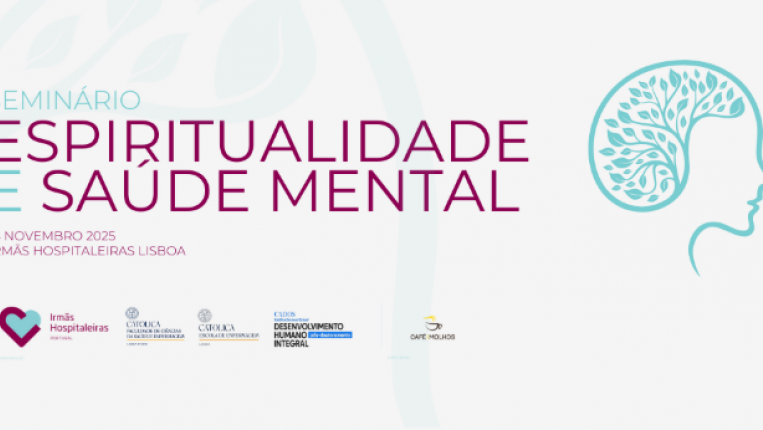Isabel Morais, 51, has devoted almost half her life to learning, researching and teaching Portuguese Sign Language (LGP), whose National Day is celebrated on 15 November.
Isabel was born deaf and, while attending a pilot course on Bilingual Education and Deafness, discovered ‘a deep interest in the linguistics of LGP’. She wanted to deepen her knowledge and took additional training at the Portuguese Association of the Deaf. Later, as an LGP teacher at the Quinta de Marrocos School Group in the Benfica area, she once again felt the need to consolidate her academic specialisation, which led her to enrol in the Portuguese Sign Language Degree at the Universidade Católica Portuguesa.
Since then, Isabel says, her connection to Católica ‘has been one of the most memorable’ of her academic and professional career. ‘The welcome was warm and respectful, and from the beginning I felt that LGP was valued as a true language of teaching, research and citizenship,’ she recalls. She adds: ‘As a student, I had very enriching learning experiences, with teachers and classmates who shared the same enthusiasm for linguistics, bilingual education and the appreciation of the deaf community. The training was demanding but deeply rewarding, and allowed me to develop theoretical and practical skills that I now apply in teaching and research.’
During her degree, Isabel participated in several projects on LGP, as a researcher and lecturer. She is currently involved in the development of the first Contemporary Dictionary of Portuguese Sign Language. Developed by the Faculty of Health Sciences and Nursing at Católica and the Instituto Superior Técnico, it is a bilingual dictionary in LGP – Portuguese to be used in classrooms via an app.
“Discovering LGP profoundly transformed my professional and personal journey, opening doors to research, teaching and promoting a more inclusive education,” sums up the alumna, who has been working in this field for 25 years.
Since 2022, she has been president of the Professional Association for Teaching LGP, which represents teachers of this language. She offers challenges and advice for both those who want to teach and those who want to learn.
“Being an LGP teacher means being a native linguistic model, culturally aware and, above all, someone with a lot of patience. Each class is an opportunity to build bridges between visual and oral worlds, and each question is a gateway to dialogue and understanding," she explains. She argues that, even though there are more training opportunities available and LGP is beginning to be recognised as a relevant area of study, there is still a long way to go before this language is truly integrated into school curricula. For example, in terms of teachers' knowledge or teaching materials. ‘LGP continues to be seen as something complementary, rather than a language of instruction with its own status,’ warns Isabel, stressing that ‘it is not just a communication tool, it is an instrument of citizenship.’ ‘When LGP is used as a language of instruction, deaf students can understand, participate and develop academically with autonomy. This contributes to their academic success, self-esteem and social integration,’ the teacher emphasises.
For those who wish to learn LGP, whether deaf or hearing, "the most important thing is to start with respect for the language and the community that uses it. LGP is not just a set of gestures; it is a complete language, with its own grammar, culture and identity,‘ he warns. The first step is to seek training with deaf teachers because ’learning from people who use LGP as their mother tongue allows for more authentic, rich and culturally contextualised learning". It is also essential to have contact with the deaf community, choose certified courses and avoid relying solely on videos or apps, which are good supplements but do not allow for true linguistic and cultural immersion, as well as practising regularly with fluent speakers.
‘Learning LGP requires patience, humility and curiosity. It is a process that goes far beyond memorising gestures — it involves understanding a way of seeing and experiencing the world through visual communication,’ she concludes.
In Portugal, there are around 30,000 deaf people, but the LGP-speaking community is much larger if you include family members, educators and other professionals.
Sign language is not universal, and each country has its own vocabulary and grammar. Portuguese sign language emerged in the 19th century at the request of King João VI and has been recognised by the Constitution since 1997.





